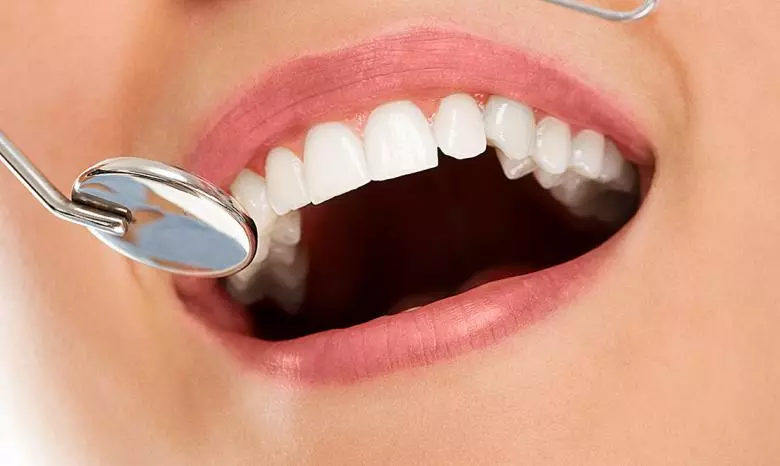Whatsapp: +90 (554) 160 5747 Online Appointment

Zirconium is an infrastructure material used in making dental crowns. It is white in color and also has light-transmitting properties. It has very high resistance to applied pressure and is biologically tissue-friendly. Clinical studies have not observed any allergic reactions caused by zirconium.
Like other types of dental crowns, a zirconium crown is bonded onto a tooth or applied in the form of a bridge to replace a missing tooth. It is presented as an aesthetic alternative to metal-porcelain crowns. Because it appears more vibrant and natural, zirconium crowns are increasingly being used, especially for front teeth.
In which dental conditions is zirconium treatment used?
1. In advanced discolorations (antibiotic, fluoride, etc.) for which methods like whitening do not yield results, and in congenital structural or color changes
2. In cases where the teeth have been previously cut or prepared
3. To close gaps between teeth (diastema closure)
4. For people who already have metal-supported crowns or bridges
5. To correct broken teeth
6. To correct the color and form of old, deteriorated fillings
7. To straighten crooked or misaligned teeth (as an alternative to orthodontic treatment)
8. In teeth with excessive material loss that cannot be repaired with a filling, zirconium treatment can be applied.
What are the advantages of zirconium crowns?
Because they are white in color, zirconium crowns do not cause the reflection of the dark metal commonly seen in metal-supported porcelain crowns. Their light-transmitting property is especially useful for achieving the ideal aesthetic in front teeth when smiling. This is one of the most crucial criteria for aesthetic dental crowns. They also have a very high resistance to chewing forces. Because of this durability, they can be easily used in the back teeth as well.
Thanks to its compatibility, zirconium does not cause allergies. Some people have metal allergies. If these individuals want to get a dental crown, a zirconium crown should be used. Otherwise, they may face many dental and gum problems such as gum inflammation, gum recession, gum bleeding, swelling, and redness.
Compared to other crowns, zirconium crowns have lower thermal conductivity; hence, they transfer less heat. As a result, they are not affected by hot and cold in the mouth and do not cause tooth sensitivity.
They can be applied to teeth of any color. A very dark tooth can be treated with a zirconium crown in the desired shade. The original color of the tooth does not affect the color of the zirconium crown. Even after many years, the color of a zirconium crown does not change. There is no extra maintenance required for zirconium teeth. Regular brushing and good oral hygiene are sufficient.
How is a zirconium crown prepared?
The preparation process for zirconium crowns is the same as for classic metal-supported porcelain crowns; however, the difference begins in the laboratory phase. Zirconium crowns can be produced using computer-aided devices. In this method, the impressions taken from the patient’s mouth are scanned by optical readers in a digital environment. The zirconium blocks are milled and shaped by computer-controlled milling systems, without any manual intervention.
Data obtained using a camera are uploaded to the computer. Designs are created (CAD), and then production begins (CAM).
Thanks to these advanced technologies, zirconium can be successfully used for single-tooth crown restorations, 3- to 6-unit bridges, and crowns/bridges on implants.
The success of the material has been proven in medicine and industry. Following research that began in 1998, clinical applications were introduced worldwide from the beginning of 2002. With this new application, aesthetic concerns arising from metal-ceramic restorations have been completely eliminated.
Why do we recommend zirconium treatment?
Because zirconium is tissue-friendly. This allows us to make long-term predictions for the porcelain’s lifespan and ease of use in the mouth, which is one of the most important reasons for recommending it.
It has a high level of fracture resistance. Zirconium has proven its strength through numerous measurements, tests, user groups, and various processes.
It is among the porcelain types that most closely resemble a natural appearance. Since there is no metal substructure, there is no grayish or dull reflection.
It provides strong thermal insulation. Therefore, compared to metal-based porcelains, it transmits less heat to the tooth, offering greater comfort to the patient. Patients can confidently consume hot or cold foods and beverages without any issues.
It is non-allergenic. Cases of allergic reactions have been extremely rare.
Because of its light-transmitting property, it has a glassy appearance and offers a much better aesthetic result.
For these and similar reasons, zirconium is a comfortable and highly preferred option in modern dentistry, offering an aesthetic porcelain tooth solution that is close to perfect.
Endodontics is the branch of dentistry that deals with the treatment of root…
A healthy and beautiful smile gives you an advantage in many areas of life. It…
Teeth lose their whiteness over time due to the consumption of certain foods,…